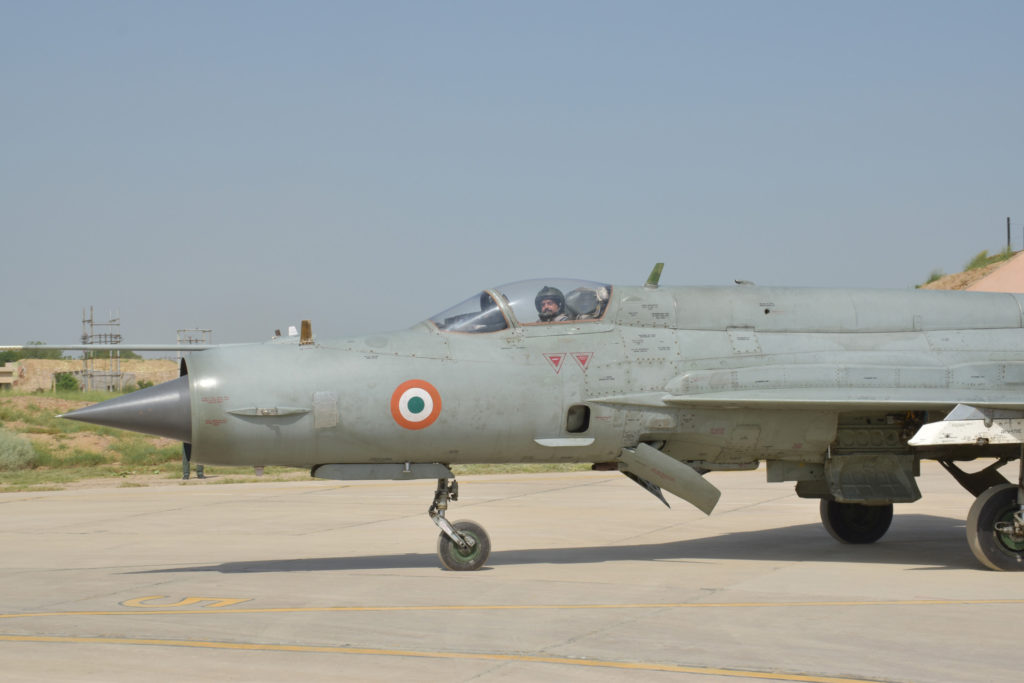One of the four remaining squadrons of the ageing MiG-21 fighter jets will be retired on September 30, three and a half years after the Indian Air Force staged a historical episode of bravery beyond enemy lines. After a MiG-21 Type 69 trainer crashed in Barmer, Rajasthan, killing both pilots, Flight Lieutenant A Bal and Wing Commander Rana, the government decided to phase it out.
At the time, Abhinandan Varthaman, a Wing Commander (now Group Captain) of the squadron, was awarded the Vir Chakra for shooting down the Pakistani F-16 over the Line of Control in February 2019. After the Indian Air Force bombed Balakot in Pakistan on February 26, 2019, it destroyed a terrorist facility when Mirage-2000s bombed the region in Pakistan-occupied Kashmir. A suicide attack on February 14 in Kashmir claimed the lives of 40 Central Reserve Police Force (CRPF) personnel. This attack was retaliation for the Pakistani attack. The assertion that this is the only air-to-air fight in which a MiG-21 has shot down an F-16 is hotly questioned outside India.
According to the official, the other three squadrons of the MiG-21 will be phased out by 2025. They said a squadron of each of these planes would be numbered yearly. The Light Combat Aircraft (LCA) replaces MiG-21 fighter jets in the Indian Air Force.
The MiG-21 Aircraft
Developed by the Soviet Union, the Mikoyan-Gurevich 21 (MiG-21) made its first flight on June 16, 1955. Having lost the 1962 Sino-Indian war to China and facing increasing pressure from Pakistan, India acquired the MiG-21 aircraft in 1963. 874 MiG-21s were inducted into the IAF over the next 25 years.
Of these, 657 were built by Hindustan Aeronautics Limited (HAL). HAL produced this aircraft in several variants, including the MiG-21FL, the MiG-21M, and the MiG-21bis. Later, the Mig-21bis were upgraded to Mig-21 Bison standards.

MiG Corp. devised a MiG-21bis upgrade programme in 1993 that included the installation of the advanced Phazotron-NIIR Kopyo slotted array radar, the introduction of advanced missiles used by Russian fourth-generation fighters (RVV-AE and R-73E air-to-air missiles, KAB-500Kr smart bombs, etc.), and the improvement of navigation, communication, and other equipment. The IAF leadership backed the MiG-21-93 programme, and on March 1, 1996, a deal was signed to upgrade 125 IAF MiG-21bis planes. The upgraded fighter, known in India as the MiG-21bis UPG Bison, was equipped with a French-made navigation system, an Israeli-built electronic warfare kit, and several Indian-made systems, in addition to the Russian-made Kopyo radar, missiles, and many other systems.
IAF Mig-21s continued to be the mainstay for the IAF despite the introduction of more advanced aircraft such as the Dassault Mirage 2000, Su-3 MKI, and Dassault Rafale.
MiG-21 Crashes
For the past many years, several MiG-21s have crashed, bringing to light the safety record of India’s longest-serving fighter plane and plans to replace the ageing aircraft with newer models shortly.
Over the past six decades, approximately 200 pilots have been killed in MiG-21 accidents.
Among all the fighter aircraft in the IAF fleet, the MiG-21 was the backbone, and the number of MiG-21 crashes within the service was among the highest in its category. The Defence Ministry, in the past, has published data showing that over 170 pilots have lost their lives in accidents due to the poor safety record of these aircraft. Between 2003 and 2013, 38 aircraft crashed in ten years, more than 20 since 2010. As a result of the high accident rate, the aircraft was nicknamed “Flying Coffin”.
It took an eternity to retire the MiG-21
There are several reasons why the IAF needs to keep operating the MiG-21, even though the aircraft should have been retired long ago. IAF’s continued use of MiG-21 is largely due to an aircraft shortage within the service. Despite the induction of Tejas LCA and Rafael, IAF’s primary fighter jet is the MiG-21. According to the IAF, a combined threat from China and Pakistan requires 42 squadrons. The IAF currently has 32 squadrons.
In the early 1980s, the government of India established the Tejas LCA (Light combat aircraft) program to replace the ageing MiG-21 and focus on Indian-made defense equipment. In the 90s, HAL produced the plane under contract with Aeronautical Development Agency, the aircraft designer. Its maiden flight took place in 2001.
Only in 2016, after the IAF gave the Initial Operational Clearance (IOC), was the first squadron with LCA Tejas Mk1 activated. Almost 30 of the 123 aircraft ordered by the IAF have been inducted. This makes up only two squadrons, while the IAF still needs more than 90 aircraft. IAF received an extension of service with MiG-21 because of this delayed delivery.
IAF’s only 4.5-generation aircraft is the French-made Dassault Rafale fighter jet. Induction of 126 Rafale could have helped in the timely retirement of MiG-21 planes despite being more expensive and having different operational capabilities than MiG-21. Under emergency orders, only 36 Rafale aircraft were procured instead of the 126 MMRCAs originally ordered. While this has provided India with an advantage against China, the number of squadrons decreased from seven to two, leaving the IAF with little choice except to use the MiG-21.
